Princess Alice Orphanage, Sutton Coldfield, Warwickshire
In 1883, the National Children's Home (NCH) opened the Princess Alice Orphanage on Old Chester Road (now Chester Road North) at New Oscott, near Sutton Coldfield, Warwickshire.
Funding for the home was partly provided by Mr Solomon Jevons of Birmingham who offered the sum of £10,000 so long as it was matched by the Wesleyan Methodist Thanksgiving Fund. The home — 'for the destitute children of Christian parents' — was named after Queen Victoria's second daughter who had died from diphtheria in 1878 after nursing her own family members with the disease. At the behest of Mr Jevons, the home only took in orphans, and so became the only NCH establishment to be named an orphanage. In consequence, the charity was renamed the Children's Home and Orphanage (the word 'National' being added in 1908).
The layout of the home was based on the 'cottage homes' model which was then becoming popular. Its layout is shown on the map below which dated from around 1903.
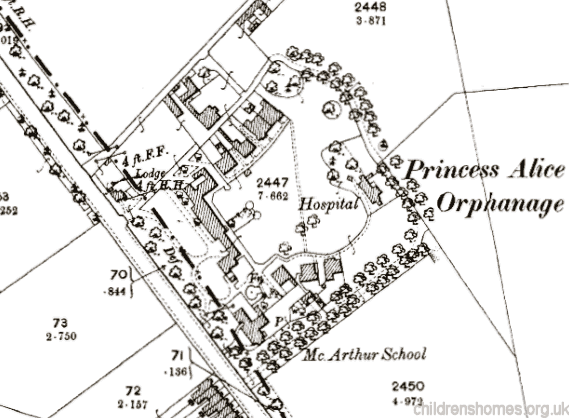
Princess Alice Orphanage site, Sutton Coldfield, c.1903.
Parallel to the road at the front of site was the long main block. As its centre were offices, above which rose a clock tower. The governor's quarters lay at the southern end of the block, although for the first two years these were occupied by children. At the northern end of the main block there was a chapel in which the children's daily worship took place. The hall also contained an organ which had previously been installed in Wesley's Chapel on City Road, London.
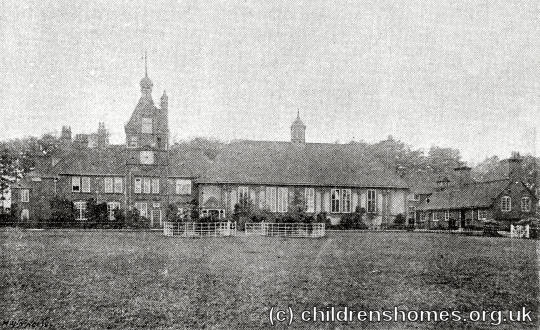
Princess Alice Orphanage — main block from the east, c.1900. © Peter Higginbotham
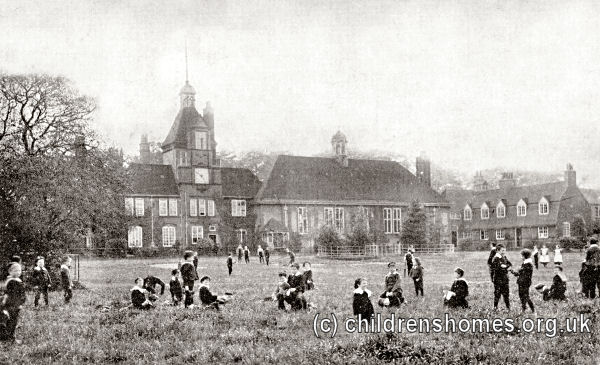
Princess Alice Orphanage — main block and playing field, c.1900. © Peter Higginbotham
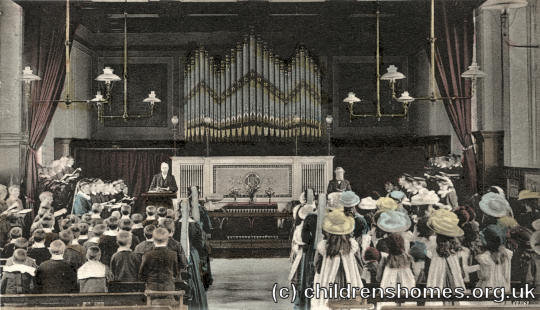
Princess Alice Orphanage — chapel interior, c.1905. © Peter Higginbotham
To the north of the hall and at right-angles to it lay kitchens, bakery, stores and the sewing room.
To the rear of the main block, a large central green was surrounded by houses in which the children lived in single-sex 'family groups' of up to thirty children under the supervision of a house-mother, or 'Sister'. The girls' houses were placed at the north side of the green. The first two to be built, nearest the main block, were named 'Shaftesbury' and 'Copeley', with 'Icknield', 'Jevons' and 'E.J.' added later..
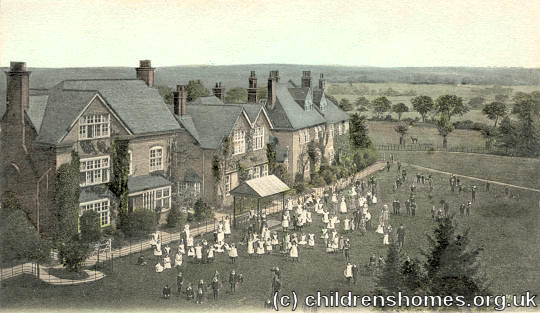
Princess Alice Orphanage — Shaftesbury, Copeley and Icknield houses, c.1905. © Peter Higginbotham
The first boys' houses, at the south side of the green, were 'Marsh Memorial', 'Seymour' and 'Meriden'. 'Copeley' was endowed with a £2,000 legacy from a Miss James of Leamington. 'Marsh Memorial' was partly endowed by a Mr Marsh of Walsall in memory of his son who had died early in life. 'Seymour' was erected through a legacy from a Mrs Seymour of Edgbaston. 'Meriden', likewise, was erected following a legacy of a Mr Samuel Meriden of Wolverhampton. Two more boys' houses, 'Beatrice' and 'Wand', were added later. By 1935, the home could house 270 children.
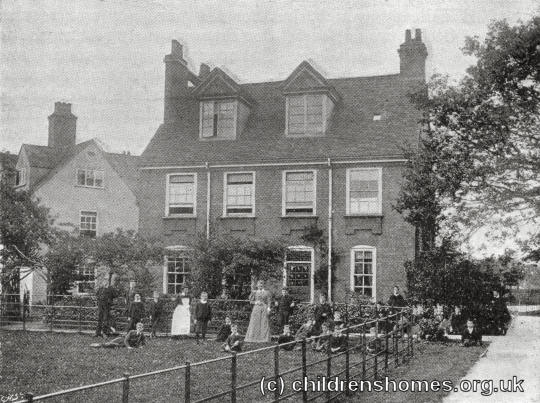
Princess Alice Orphanage — Marsh Memorial house, c.1900. © Peter Higginbotham
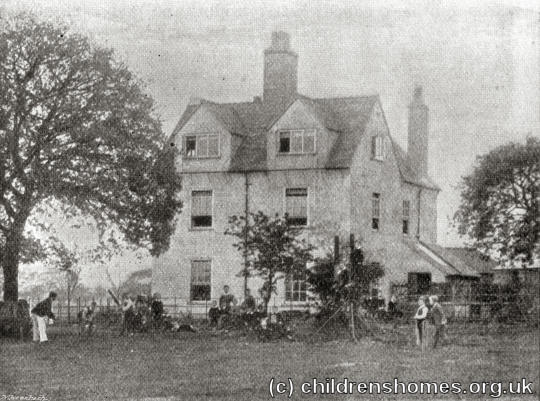
Princess Alice Orphanage — Seymour house, c.1900. © Peter Higginbotham
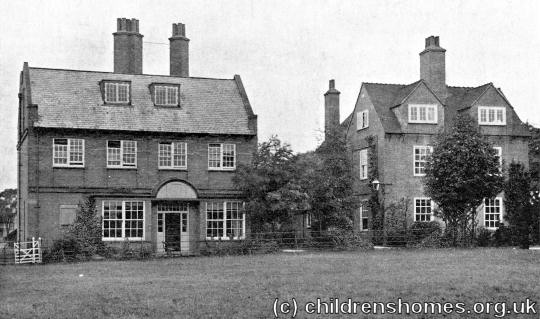
Princess Alice Orphanage — Meriden House and Seymour house, c.1930s. © Peter Higginbotham
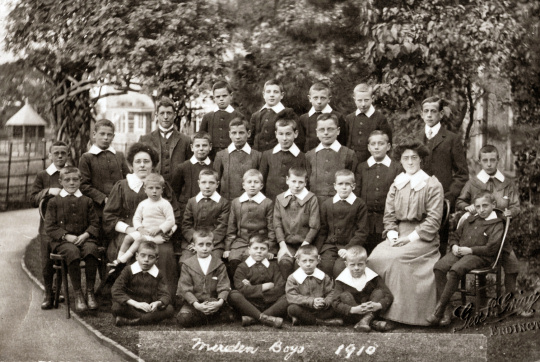
Princess Alice Orphanage — Meriden House boys, 1910. © Peter Higginbotham
Medical facilities at the home were originally located in a small 'hospice' or hospital at the eastern end of the green (see map above) whose cost was borne by the same Miss James who had funded 'Copeley'. In 1923, a larger facility was built immediately to the north of the old hospital.
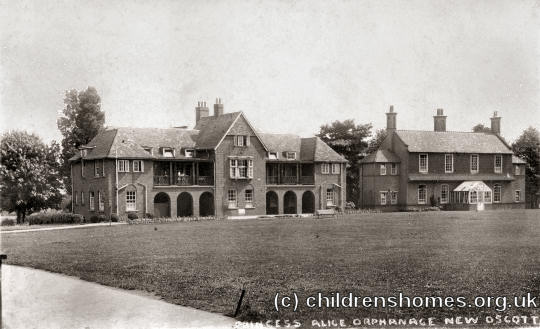
Princess Alice Orphanage — new and old hospitals, late 1930s. © Peter Higginbotham
The new hospital had balconies on which patients could be placed for fresh air and sunshine although these were later covered in.
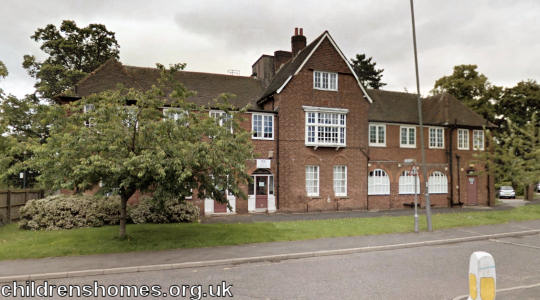
Princess Alice Orphanage — new hospital block, c.2009.
The home originally had its own school, located at the southernmost corner of the site. The building was named after Sir William McArthur whose legacy had funded its construction.
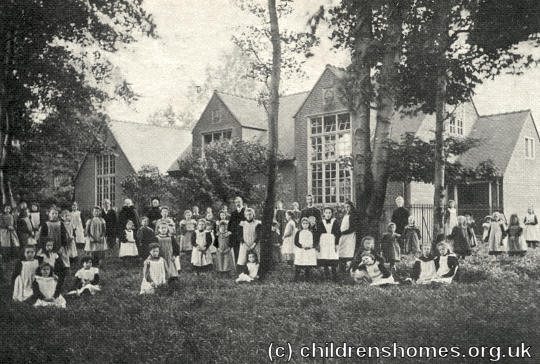
Princess Alice Orphanage — McArthur School, c1905. © Peter Higginbotham
Eventually, the children started going out to local council schools such as Green Lane Junior. The school block was then demolished and replaced by a new community building called Brampton Hall, now the sole surviving part of the home.
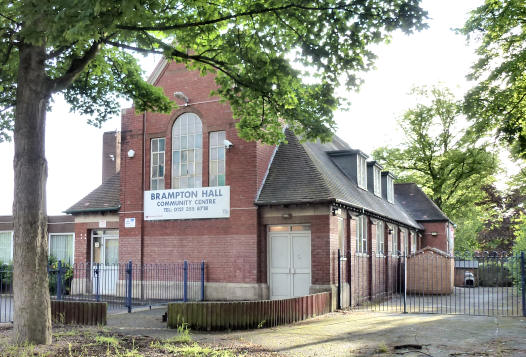
Princess Alice Orphanage — Brampton Hall, 2013. © Peter Higginbotham
The layout of the site in the mid-1930s is shown on the map below.
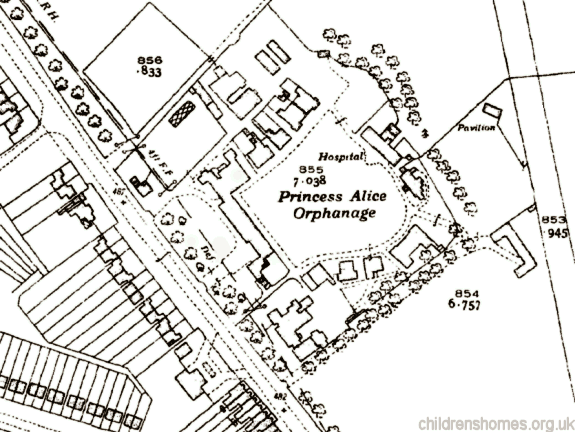
Princess Alice Orphanage site, Sutton Coldfield, c.1937.
As well as basic education, children at the home received training in skills that would help make them employable in later life. For the girls, this included dressmaking, millinery and, by 1930, typewriting. The boys learned trades such as carpentry, shoe-making, breadmaking, and farm and garden work. Farm buildings to the north of the main block included a stable, a cowhouse, a piggery, a barn, a chicken house and a dairy.
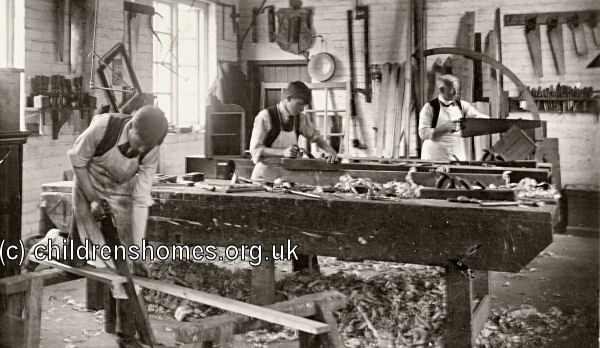
Princess Alice Orphanage — carpenters' shop, c.1926. © Peter Higginbotham
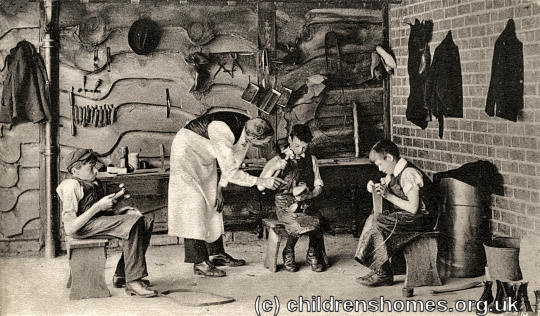
Princess Alice Orphanage — boys shoemaking, c.1905. © Peter Higginbotham
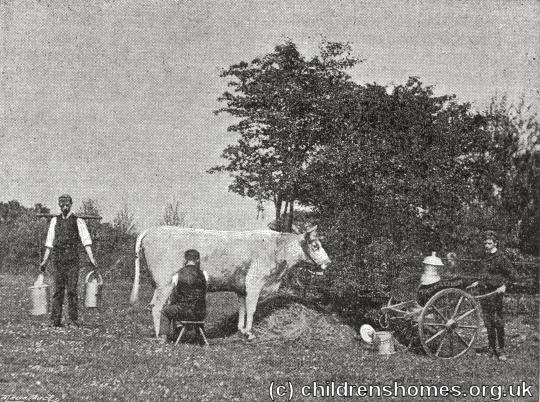
Princess Alice Orphanage — boys milking a cow, c.1900. © Peter Higginbotham
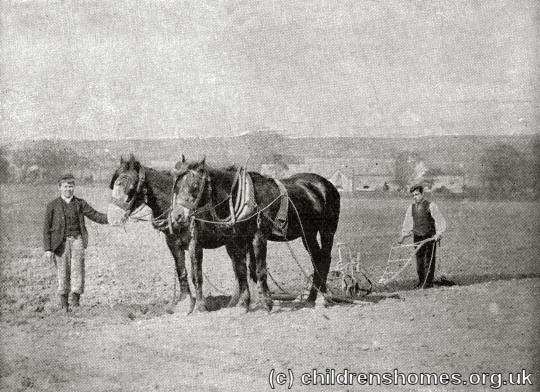
Princess Alice Orphanage — boys ploughing, c.1900. © Peter Higginbotham
Other activities included swimming in the home's own pool. A Boy Scout troop was set up sometime around 1912.
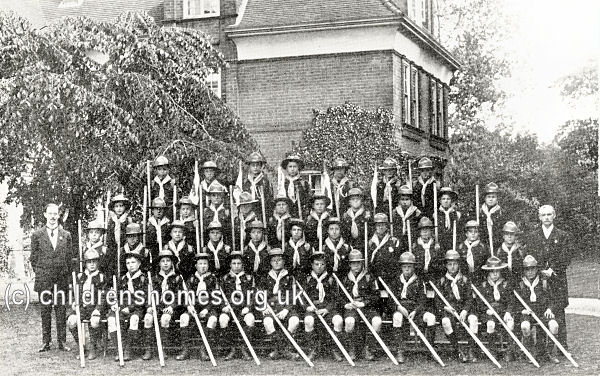
Princess Alice Orphanage - Boy Scout Troop, c.1912. © Peter Higginbotham
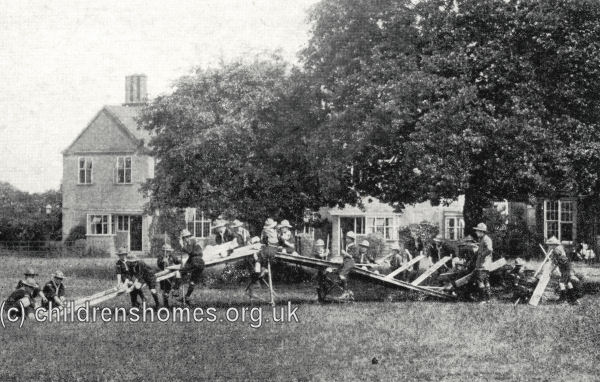
Princess Alice Orphanage - Boy Scouts bulding a bridge, c.1912. © Peter Higginbotham
Music also played in important part in the children's lives — the home had its own choir and band of musicians.
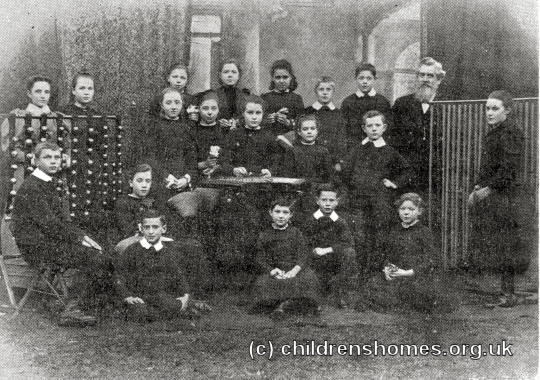
Princess Alice Orphanage — choir and musicians, c.1900. © Peter Higginbotham
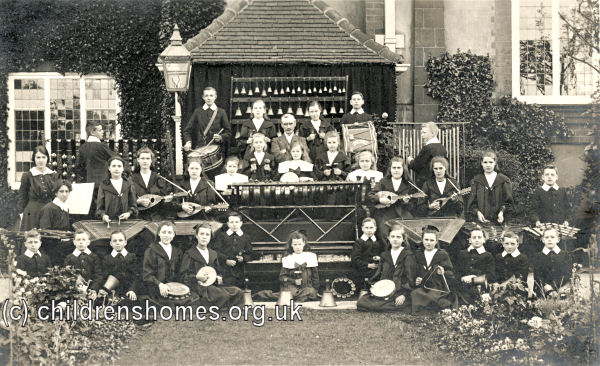
Princess Alice Orphanage — choir and musicians, early 1900s. © Peter Higginbotham
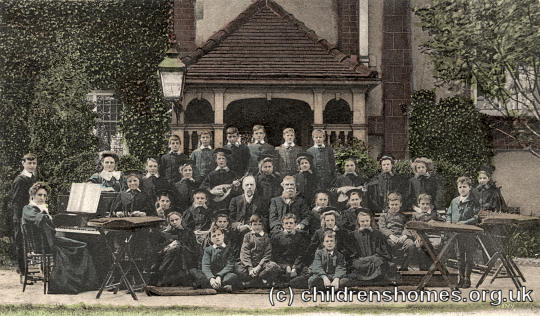
Princess Alice Orphanage — choir and musicians, c.1905. © Peter Higginbotham
The home's first Governor (from 1883 to 1903) was Thomas Durley of Abingdon, who received a salary of £100 a year.
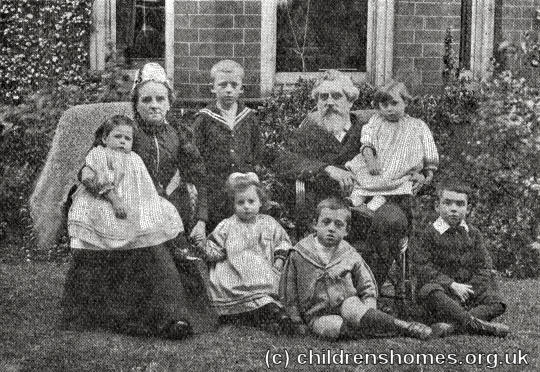
Princess Alice Orphanage — Thomas Durley (seated right) with some of the children, c.1900. © Peter Higginbotham
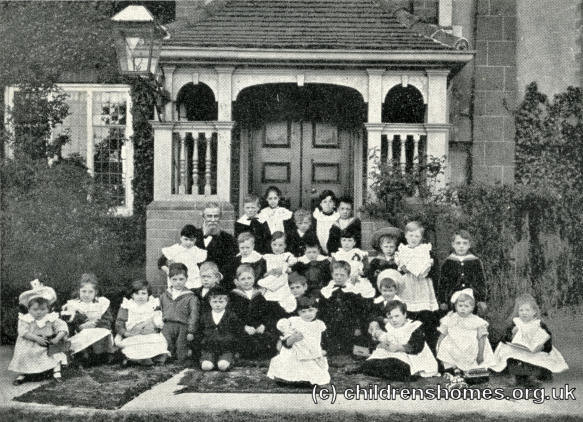
Princess Alice Orphanage — a group of children and staff, c.1905. © Peter Higginbotham
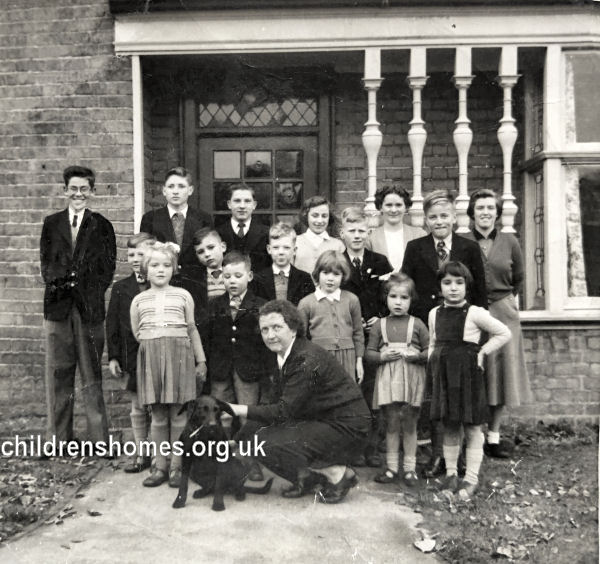
Princess Alice Orphanage, c.1960. © Alan Wilson
The home continued to operate during the Second World War and received children evacuated from other NCH branches. For a while, the total number in residence at the home swelled to more than three hundred.
After the war, the home moved towards the family-style groups in the homes being smaller — typically ten to twelve children — and also mixed. To facilitate this, four additional children's houses were built in the early 1950s. A new residential nursery and nursery school were also established on the site, together with a staff training unit, the Princess Alice College.
The home finally closed in around 1982. All of the home's buildings have now been demolished with the exception of Brampton Hall, now used as a community centre.
Records
Note: many repositories impose a closure period of up to 100 years for records identifying individuals. Before travelling a long distance, always check that the records you want to consult will be available.
- Action For Children (formerly the National Children's Home). Can provide access to their own records for individuals who were adopted through the charity or who resided in one of its homes. Help also for those searching for family history information.
Bibliography
- Hamblin, Alan If Only These Walls Could Speak: An Orphanage Diary (2010, Blenheim Press)
- Bradfield, William The Life of the Reverend Thomas Bowman Stephenson (1913, Kelly)
- Curnock, Nehemiah The Story of the Children's Home (C.H. Kelly, 1901)
- Higginbotham, Peter Children's Homes: A History of Institutional Care for Britain's Young (2017, Pen & Sword)
- Horner, Francis Shadow and Sun (Epworth Press, 1920)
- Howard, Philip J Philip: a Strange Child (Dalkeith Publishing, 2007)
- Philpot, Terry Action For Children (Lion, 1994)
- Walpole, Cecil F. Golden Links (Epworth Press, 1941)
Links
- Action For Children.
- Their History — a website on the homes by a former resident.
- Growing up in the NCH — a forum for those who spent time in NCH homes.
Films
- Scenes from various NCH Homes — 1960s film footage.
- NCH Documentary (1954) Part 1 — Arriving at Harpenden.
- NCH Documentary (1954) Part 2 — Harpenden Oval.
- NCH Documentary (1954) Part 3 — Annual Convocation, Alverstoke
- NCH Documentary (1954) Part 4 — Special facilities at Danesford, Chipping Norton, Harpenden and Frodsham.
- NCH Documentary (1954) Part 5 — Founders Day at Princess Alice Orphanage; training at Harpenden.
- NCH Documentary (1954) Part 6 — Harpenden.
- NCH Documentray (1964) Part 1 — Disabled and special needs at Harpenden and Chipping Norton
- NCH Documentary (1964) Part 2 — Disabled and special needs children at Harpenden, Edgworth, Chipping Norton.
- NCH Documentary (1964) Part 3 — Harpenden, Edgworth, Chipping Norton.
- NCH Documentary (1964) Part 4 — Alverstoke.
- NCH Documentary (1964) Part 5 — Alverstoke.
- NCH Documentary (1964) Part 6 — Alverstoke.
- NCH Frodsham (1960s) Part 1
- NCH Frodsham (1960s) Part 2
- NCH Brackley (1960s)
- Danesford School (1960s)
Except where indicated, this page () © Peter Higginbotham. Contents may not be reproduced without permission.


